Margo Kelly's Blog, page 14
December 18, 2017
Paperback Book Giveaway for WHO R U REALLY?!
.goodreadsGiveawayWidget { color: #555; font-family: georgia, serif; font-weight: normal; text-align: left; font-size: 14px; font-style: normal; background: white; } .goodreadsGiveawayWidget p { margin: 0 0 .5em !important; padding: 0; } .goodreadsGiveawayWidgetEnterLink { display: inline-block; color: #181818; background-color: #F6F6EE; border: 1px solid #9D8A78; border-radius: 3px; font-family: "Helvetica Neue", Helvetica, Arial, sans-serif; font-weight: bold; text-decoration: none; outline: none; font-size: 13px; padding: 8px 12px; } .goodreadsGiveawayWidgetEnterLink:hover { color: #181818; background-color: #F7F2ED; border: 1px solid #AFAFAF; text-decoration: none; }
Goodreads Book Giveaway

Who R U Really?
by Margo Kelly
Giveaway ends January 04, 2018.
See the giveaway details
at Goodreads.
Enter Giveaway
Published on December 18, 2017 09:38
Book Review: GREATEST LOVE by Dr. & Master Zhi Gang Sha
One of my goals and dreams is to be a person who reacts first--to any situation--with love. So whenever a book comes along that teaches basic concepts to guide me along this path, I jump at the chance to read it. ... Scroll down to the bottom of this post for my complete review.
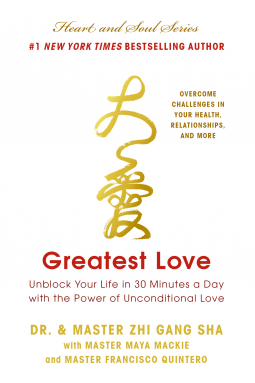
Greatest Love
By Dr. & Master Zhi Gang Sha with Maya Mackie
Published by BenBella Books
Hardcover
November 14, 2017
$12.95 US
ISBN: 9781946885043
Description from Publisher:
Feel the greatest love. Experience the greatest love. Embody the greatest love.
The greatest love is love that truly lasts and has no conditions. It is the love of a mother for her child. It is the love we read about in poems. It is the love we long to have.
We all have challenges that keep us from experiencing this greatest love. These challenges may present themselves in your health, relationships, or finances. With this book, learn how to unblock your life in 30 minutes a day with the power of unconditional love, the greatest love, which surpasses the human and enters the love of all creation.
Practice the simple, joyful exercises within this book, and receive powerful blessings from Dr. and Master Zhi Gang Sha, a world-renowned healer, humanitarian, spiritual master, and 11 time New York Times bestselling author, Master Maya Mackie, who also embodies the purest love and compassion, as well as Master Francisco Quintero.
The power of greatest love can melt all blockages and harmonize all separation and all that is not love. Carry this treasure with you to apply its wisdom anywhere, anytime, to enrich and bless your health, relationships, finances, intelligence, and every aspect of life.
Author Bios:
Dr. and Master Zhi Gang Sha is a medical doctor trained in Western medicine in China and is certified in Traditional ChineseMedicine and Acupuncture in China and Canada. A renowned spiritual teacher and 11 times New York Times bestselling author of 24 books, he is also a Grandmaster of several Eastern Arts, including qi gong, kung fu, Tai Chi, feng shui, and the I Ching. He has been recognized as a Shu Fa Jian (National Calligrapher Master) and appointed to the position of Yan Jiu Yuan (Honorable Researcher Professor) by the State Ethnic Academy of Painting in China. Master Sha is also the founder of the Love Peace Harmony Foundation, dedicated to raising consciousness worldwide and to helping to provide direct assistance to people living in need. He has received widespread recognition for his humanitarian work, including the Martin Luther King, Jr. Commemorative Commission Award, the honor of September 21, 2014 being named “Dr. and Master Zhi Gang Sha Day” by the Council of the City and County of Honolulu, Hawaii, and Commendations from both Los Angeles County and the Hawaii Senate.
Master Maya Mackie is a UN Ambassador for Peace and a Certified Master Teacher, trained by Master Zhi Gang Sha. Born in Lebanon, as a young child Master Maya lived with her family in West Africa and observed the great inequality in living conditions and opportunities that exist in the world. Now based in Europe and a mother of three children, she is honored to support the United Nations development programs through fundraising events for the underprivileged and underdeveloped areas in Lebanon and the Middle East. With compassion and unconditional love, she offers classes and workshops worldwide, teaching spiritual wisdom and practices.
Master Francisco Quintero is a Certified Master Teacher trained by renowned spiritual teacher and humanitarian Master Zhi Gang Sha, and the author of Divine Joy: How to Find Joy in Daily Life. A leading teacher at the Tao Academy™, Master Francisco has developed training programs worldwide. With his expertise, wisdom, and knowledge, he has assisted in training over 6,000 soul practitioners and teachers around the world.
My Review:
GREATEST LOVE, by Dr. & Master Zhi Gang Sha and co-authors, Master Mackie and Master Quintero, is a pocket-sized book with nuggets of truth, which can transform lives when practiced regularly.
As with Master Sha's previous book, SOUL OVER MATTER, this book also contains quite a bit of repetition and translation. However, with GREATEST LOVE, I began to recognize the value of the repetition as almost a form of meditation and acceptance. I'm not quite sure I grasp the necessity of the constant translation of words from "ancient Chinese wisdom" into English. I understand there are different frequencies associated with different words chanted, but I would think that the energy behind the message would be equivalent no matter the language. With that said, I found it fascinating to read about and even master the various phrases.
Another item I found more interesting in this book than his other book I've read is the concept of tracing calligraphy. In GREATEST LOVE, Master Sha relates the practice of tracing to tai chi, which utilizes the forces of tai ji--the ying and yang behind the movements. He writes, "Millions of people worldwide practice the sacred ancient movement and wisdom of tai ji to benefit their health and for stress reduction, longevity, and more" (page 44). That was an "a-ha" moment for me while reading.
"You are what you think," is a common phrase heard in the United States, and Master Sha writes, "What you chant is what you become" (page 11). He recommends keeping the chant "Da Ai" in our foremost thoughts. Da Ai means greatest love.
Master Sha teaches within this small book, GREATEST LOVE, techniques for creating amazing transformations within our lives by tapping into the energy of love.
[My thanks to FSB Associates for providing a copy of this book to review, which in no way influenced my opinion.]

Greatest Love
By Dr. & Master Zhi Gang Sha with Maya Mackie
Published by BenBella Books
Hardcover
November 14, 2017
$12.95 US
ISBN: 9781946885043
Description from Publisher:
Feel the greatest love. Experience the greatest love. Embody the greatest love.
The greatest love is love that truly lasts and has no conditions. It is the love of a mother for her child. It is the love we read about in poems. It is the love we long to have.
We all have challenges that keep us from experiencing this greatest love. These challenges may present themselves in your health, relationships, or finances. With this book, learn how to unblock your life in 30 minutes a day with the power of unconditional love, the greatest love, which surpasses the human and enters the love of all creation.
Practice the simple, joyful exercises within this book, and receive powerful blessings from Dr. and Master Zhi Gang Sha, a world-renowned healer, humanitarian, spiritual master, and 11 time New York Times bestselling author, Master Maya Mackie, who also embodies the purest love and compassion, as well as Master Francisco Quintero.
The power of greatest love can melt all blockages and harmonize all separation and all that is not love. Carry this treasure with you to apply its wisdom anywhere, anytime, to enrich and bless your health, relationships, finances, intelligence, and every aspect of life.
Author Bios:
Dr. and Master Zhi Gang Sha is a medical doctor trained in Western medicine in China and is certified in Traditional ChineseMedicine and Acupuncture in China and Canada. A renowned spiritual teacher and 11 times New York Times bestselling author of 24 books, he is also a Grandmaster of several Eastern Arts, including qi gong, kung fu, Tai Chi, feng shui, and the I Ching. He has been recognized as a Shu Fa Jian (National Calligrapher Master) and appointed to the position of Yan Jiu Yuan (Honorable Researcher Professor) by the State Ethnic Academy of Painting in China. Master Sha is also the founder of the Love Peace Harmony Foundation, dedicated to raising consciousness worldwide and to helping to provide direct assistance to people living in need. He has received widespread recognition for his humanitarian work, including the Martin Luther King, Jr. Commemorative Commission Award, the honor of September 21, 2014 being named “Dr. and Master Zhi Gang Sha Day” by the Council of the City and County of Honolulu, Hawaii, and Commendations from both Los Angeles County and the Hawaii Senate.
Master Maya Mackie is a UN Ambassador for Peace and a Certified Master Teacher, trained by Master Zhi Gang Sha. Born in Lebanon, as a young child Master Maya lived with her family in West Africa and observed the great inequality in living conditions and opportunities that exist in the world. Now based in Europe and a mother of three children, she is honored to support the United Nations development programs through fundraising events for the underprivileged and underdeveloped areas in Lebanon and the Middle East. With compassion and unconditional love, she offers classes and workshops worldwide, teaching spiritual wisdom and practices.
Master Francisco Quintero is a Certified Master Teacher trained by renowned spiritual teacher and humanitarian Master Zhi Gang Sha, and the author of Divine Joy: How to Find Joy in Daily Life. A leading teacher at the Tao Academy™, Master Francisco has developed training programs worldwide. With his expertise, wisdom, and knowledge, he has assisted in training over 6,000 soul practitioners and teachers around the world.
My Review:
GREATEST LOVE, by Dr. & Master Zhi Gang Sha and co-authors, Master Mackie and Master Quintero, is a pocket-sized book with nuggets of truth, which can transform lives when practiced regularly.
As with Master Sha's previous book, SOUL OVER MATTER, this book also contains quite a bit of repetition and translation. However, with GREATEST LOVE, I began to recognize the value of the repetition as almost a form of meditation and acceptance. I'm not quite sure I grasp the necessity of the constant translation of words from "ancient Chinese wisdom" into English. I understand there are different frequencies associated with different words chanted, but I would think that the energy behind the message would be equivalent no matter the language. With that said, I found it fascinating to read about and even master the various phrases.
Another item I found more interesting in this book than his other book I've read is the concept of tracing calligraphy. In GREATEST LOVE, Master Sha relates the practice of tracing to tai chi, which utilizes the forces of tai ji--the ying and yang behind the movements. He writes, "Millions of people worldwide practice the sacred ancient movement and wisdom of tai ji to benefit their health and for stress reduction, longevity, and more" (page 44). That was an "a-ha" moment for me while reading.
"You are what you think," is a common phrase heard in the United States, and Master Sha writes, "What you chant is what you become" (page 11). He recommends keeping the chant "Da Ai" in our foremost thoughts. Da Ai means greatest love.
Master Sha teaches within this small book, GREATEST LOVE, techniques for creating amazing transformations within our lives by tapping into the energy of love.
[My thanks to FSB Associates for providing a copy of this book to review, which in no way influenced my opinion.]
Published on December 18, 2017 09:15
December 6, 2017
#IWSG: What Would You Change About 2017?
First Wednesday of the month is Insecure Writers Support Group!
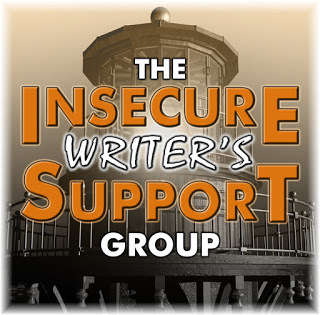
Purpose: To share and encourage. Writers can express doubts and concerns without fear of appearing foolish or weak. Those who have been through the fire can offer assistance and guidance. It’s a safe haven for insecure writers of all kinds! For complete details visit: http://www.insecurewriterssupportgroup.com/
This month's IWSG question up for discussion is: "As you look back on 2017, with all its successes and failures, if you could backtrack, what would you do differently?"
My answer: The first thought that popped into my mind dealt with the current political nature of the country; however, the followup thoughts were . . . I wish I could go back and be nicer to people, do more kind things for others, make more people smile. Because while I might not be able to change the landscape of the entire country (or world for that matter), I can change the trajectory of one person's day . . . simply by smiling or saying hello or being charitable. We all can. Imagine that. ;)
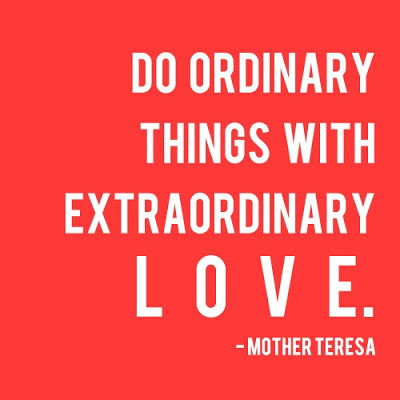
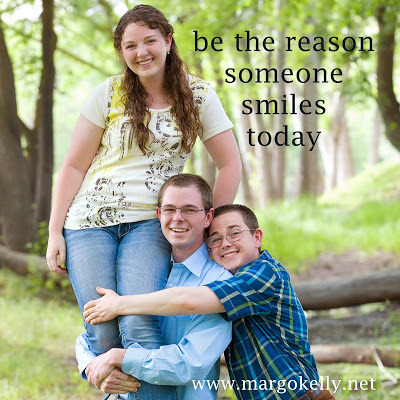
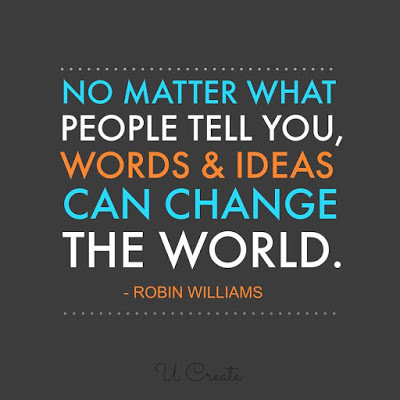

Purpose: To share and encourage. Writers can express doubts and concerns without fear of appearing foolish or weak. Those who have been through the fire can offer assistance and guidance. It’s a safe haven for insecure writers of all kinds! For complete details visit: http://www.insecurewriterssupportgroup.com/
This month's IWSG question up for discussion is: "As you look back on 2017, with all its successes and failures, if you could backtrack, what would you do differently?"
My answer: The first thought that popped into my mind dealt with the current political nature of the country; however, the followup thoughts were . . . I wish I could go back and be nicer to people, do more kind things for others, make more people smile. Because while I might not be able to change the landscape of the entire country (or world for that matter), I can change the trajectory of one person's day . . . simply by smiling or saying hello or being charitable. We all can. Imagine that. ;)



Published on December 06, 2017 01:30
November 6, 2017
Book Review & Giveaway: THE PRECIOUS DREADFUL by Steven Parlato
Whew! I just finished reading a terrific new book from Steven Parlato. I'm excited to share my review (scroll down to read it at the bottom of this post) AND to share a giveaway for an Advance Reviewer Copy (gently read by me). YAY for books!
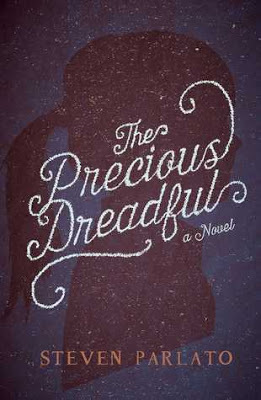 The Precious Dreadful
The Precious Dreadful
by Steven Parlato
Available for purchase: February 13, 2018
Publisher: Simon Pulse (Simon & Schuster)
ISBN: 978-1507202777
Hardcover: $18.99
E-Book: $10.99
Description from the publisher:
When she joins SUMMERTEENS, a library writing group, she’s only looking to keep herself busy, not go digging around in her subconscious. But as she writes, disturbing memories of her lost childhood friend Corey bubble to the surface, and Teddi begins to question everything: her friendship with her BFF Willa, how much her mom really knows, and even her own memories. Teddi fears she’s losing her grip on reality—as evidenced by that mysterious ghost-girl who emerges from the park pool one night, the one who won’t leave Teddi alone. To top it all off, she finds herself juggling two guys with potential, a quirky new boy named Joy and her handsome barista crush Aidan, who has some issues of his own.
As the summer unfolds, Teddi is determined to get to the bottom of everything—her feelings, the mysterious ghost-girl, and the memories of Corey that refuse to be ignored.
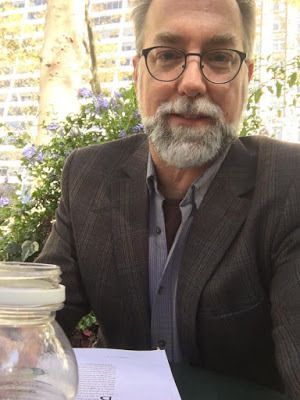
About the author:
Steven Parlato
Award-winning author and poet, Steven Parlato, has work in Freshwater, Peregrine, and other journals. Upon the release of his YA debut,
Enter to win an ARC (an Advance Reviewer Copy, not for sale, a collector's item!)
of THE PRECIOUS DREADFUL!!
a Rafflecopter giveaway
My Review:
In THE PRECIOUS DREADFUL, Steven Parlato paints settings and portrays characters with poetic language that lures the reader with each rhythmic phrase.
Before opening this book, I wondered if a male author could write an authentic teenage girl as a main character. Well, Steven Parlato certainly did with Teddi Alder in THE PRECIOUS DREADFUL. From page one, Parlato brought Teddi’s character to life with a distinctive, feisty voice of her own. For example, Parlato wrote, “Everything about me is halfway. Five-six, I’m stalled between jockey-little and catwalk-tall. Sophomore year ended yesterday, so I’m officially midway through the obstacle course called high school. I’m also half a virgin. So.” (page 1) There was only one spot in the story where I was pulled from the fictive experience, and that was when Parlato wrote, “I can’t believe I’m saying this—she is indeed, boner-worthy.” (page 47) Yeah. I couldn’t believe she said it either. I can’t recall ever hearing a female say that. But hey, other than that, I was completely enthralled by Teddi’s voice and Parlato’s writing.
The plot of THE PRECIOUS DREADFUL kept me engaged and curious to find out what was going to happen next. I was invested in Teddi, and I wanted her to solve the mystery of the ghost and the mystery of her lost memories. When she did solve them, I was both awestruck and heart broken. I’d grown to love Teddi, and I didn’t want her to hurt. Parlato did an excellent job sinking his writerly teeth into me and never letting go.
Parlato certainly pulled no punches when exploring uncomfortable situations. He pushed the characters (and the reader) right to the edge and made us feel all the feels. Along with that, there was a variety of cussing spattered throughout, including the F-word, but not enough to make me cringe or turn away.
THE PRECIOUS DREADFUL by Steven Parlato is an engaging mystery with compelling characters and an intriguing plot. I highly recommend it.
Here are some of my favorite lines from the book:
“Rather than the intended comfort, his remark thwacks a dollop of disappointment atop my plate of unease.” (page 43)
“I’m the one mistake my mother didn’t make repeatedly.” (page 47)
“…the most prized writer traits are ‘fearlessness and fertility.’” (page 65)
“Then, a havoc of wings and water, a squad of Canada geese land, paddlefeet churning the slime. Skimming in bowling-pin formation, they patrol; their calls are mechanical, more bark than birdsong.” (page 167)
“The moon is a dirty fingernail; it rips a hole in the black fabric sky.” (page 268)
“We can talk to one another without the echoes of past arguments interrupting.” (page 334)
[I received an early copy in exchange for an honest review. This in no way influenced my opinion.]


You can pre-order your copy of THE PRECIOUS DREADFUL now on Amazon.
 The Precious Dreadful
The Precious Dreadful
by Steven Parlato
Available for purchase: February 13, 2018
Publisher: Simon Pulse (Simon & Schuster)
ISBN: 978-1507202777
Hardcover: $18.99
E-Book: $10.99
Description from the publisher:
When she joins SUMMERTEENS, a library writing group, she’s only looking to keep herself busy, not go digging around in her subconscious. But as she writes, disturbing memories of her lost childhood friend Corey bubble to the surface, and Teddi begins to question everything: her friendship with her BFF Willa, how much her mom really knows, and even her own memories. Teddi fears she’s losing her grip on reality—as evidenced by that mysterious ghost-girl who emerges from the park pool one night, the one who won’t leave Teddi alone. To top it all off, she finds herself juggling two guys with potential, a quirky new boy named Joy and her handsome barista crush Aidan, who has some issues of his own.
As the summer unfolds, Teddi is determined to get to the bottom of everything—her feelings, the mysterious ghost-girl, and the memories of Corey that refuse to be ignored.

About the author:
Steven Parlato
Award-winning author and poet, Steven Parlato, has work in Freshwater, Peregrine, and other journals. Upon the release of his YA debut,
Enter to win an ARC (an Advance Reviewer Copy, not for sale, a collector's item!)
of THE PRECIOUS DREADFUL!!
a Rafflecopter giveaway
My Review:
In THE PRECIOUS DREADFUL, Steven Parlato paints settings and portrays characters with poetic language that lures the reader with each rhythmic phrase.
Before opening this book, I wondered if a male author could write an authentic teenage girl as a main character. Well, Steven Parlato certainly did with Teddi Alder in THE PRECIOUS DREADFUL. From page one, Parlato brought Teddi’s character to life with a distinctive, feisty voice of her own. For example, Parlato wrote, “Everything about me is halfway. Five-six, I’m stalled between jockey-little and catwalk-tall. Sophomore year ended yesterday, so I’m officially midway through the obstacle course called high school. I’m also half a virgin. So.” (page 1) There was only one spot in the story where I was pulled from the fictive experience, and that was when Parlato wrote, “I can’t believe I’m saying this—she is indeed, boner-worthy.” (page 47) Yeah. I couldn’t believe she said it either. I can’t recall ever hearing a female say that. But hey, other than that, I was completely enthralled by Teddi’s voice and Parlato’s writing.
The plot of THE PRECIOUS DREADFUL kept me engaged and curious to find out what was going to happen next. I was invested in Teddi, and I wanted her to solve the mystery of the ghost and the mystery of her lost memories. When she did solve them, I was both awestruck and heart broken. I’d grown to love Teddi, and I didn’t want her to hurt. Parlato did an excellent job sinking his writerly teeth into me and never letting go.
Parlato certainly pulled no punches when exploring uncomfortable situations. He pushed the characters (and the reader) right to the edge and made us feel all the feels. Along with that, there was a variety of cussing spattered throughout, including the F-word, but not enough to make me cringe or turn away.
THE PRECIOUS DREADFUL by Steven Parlato is an engaging mystery with compelling characters and an intriguing plot. I highly recommend it.
Here are some of my favorite lines from the book:
“Rather than the intended comfort, his remark thwacks a dollop of disappointment atop my plate of unease.” (page 43)
“I’m the one mistake my mother didn’t make repeatedly.” (page 47)
“…the most prized writer traits are ‘fearlessness and fertility.’” (page 65)
“Then, a havoc of wings and water, a squad of Canada geese land, paddlefeet churning the slime. Skimming in bowling-pin formation, they patrol; their calls are mechanical, more bark than birdsong.” (page 167)
“The moon is a dirty fingernail; it rips a hole in the black fabric sky.” (page 268)
“We can talk to one another without the echoes of past arguments interrupting.” (page 334)
[I received an early copy in exchange for an honest review. This in no way influenced my opinion.]


You can pre-order your copy of THE PRECIOUS DREADFUL now on Amazon.
Published on November 06, 2017 20:15
November 1, 2017
Goodreads Giveaway for UNLOCKED by Margo Kelly
.goodreadsGiveawayWidget { color: #555; font-family: georgia, serif; font-weight: normal; text-align: left; font-size: 14px; font-style: normal; background: white; } .goodreadsGiveawayWidget p { margin: 0 0 .5em !important; padding: 0; } .goodreadsGiveawayWidgetEnterLink { display: inline-block; color: #181818; background-color: #F6F6EE; border: 1px solid #9D8A78; border-radius: 3px; font-family: "Helvetica Neue", Helvetica, Arial, sans-serif; font-weight: bold; text-decoration: none; outline: none; font-size: 13px; padding: 8px 12px; } .goodreadsGiveawayWidgetEnterLink:hover { color: #181818; background-color: #F7F2ED; border: 1px solid #AFAFAF; text-decoration: none; }
Goodreads Book Giveaway

Unlocked
by Margo Kelly
Giveaway ends November 20, 2017.
See the giveaway details
at Goodreads.
Enter Giveaway
Published on November 01, 2017 03:00
#IWSG: NaNoWriMo
First Wednesday of the month is Insecure Writers Support Group!

Purpose: To share and encourage. Writers can express doubts and concerns without fear of appearing foolish or weak. Those who have been through the fire can offer assistance and guidance. It’s a safe haven for insecure writers of all kinds! For complete details visit: http://www.insecurewriterssupportgroup.com/
This month's IWSG question up for discussion is: "Win or not, do you usually finish your NaNo project? Have any of them gone on to be published?"
<< "National Novel Writing Month (NaNoWriMo) is a fun, seat-of-your-pants approach to creative writing. On November 1, participants begin working towards the goal of writing a 50,000-word novel by 11:59 PM on November 30. Valuing enthusiasm, determination, and a deadline, NaNoWriMo is for anyone who has ever thought about writing a novel." For more info: https://nanowrimo.org/ >>
My answer: I did create an account online with NaNoWriMo a few years ago, but then I never did anything with it. I would love to participate in NaNo . . . (I even gave a school presentation about it one year.) . . . but the timing has never been right for my process. I tend to be in the middle of revisions every time November rolls around for me. So, no, I have never finished a NaNo project, because I never started one. ;)
How about you? Are you doing NaNoWriMo this year?

Purpose: To share and encourage. Writers can express doubts and concerns without fear of appearing foolish or weak. Those who have been through the fire can offer assistance and guidance. It’s a safe haven for insecure writers of all kinds! For complete details visit: http://www.insecurewriterssupportgroup.com/
This month's IWSG question up for discussion is: "Win or not, do you usually finish your NaNo project? Have any of them gone on to be published?"
<< "National Novel Writing Month (NaNoWriMo) is a fun, seat-of-your-pants approach to creative writing. On November 1, participants begin working towards the goal of writing a 50,000-word novel by 11:59 PM on November 30. Valuing enthusiasm, determination, and a deadline, NaNoWriMo is for anyone who has ever thought about writing a novel." For more info: https://nanowrimo.org/ >>
My answer: I did create an account online with NaNoWriMo a few years ago, but then I never did anything with it. I would love to participate in NaNo . . . (I even gave a school presentation about it one year.) . . . but the timing has never been right for my process. I tend to be in the middle of revisions every time November rolls around for me. So, no, I have never finished a NaNo project, because I never started one. ;)
How about you? Are you doing NaNoWriMo this year?
Published on November 01, 2017 01:30
October 30, 2017
Book Review: A Parent's Guide to Teen Addiction by Laurence Westreich MD
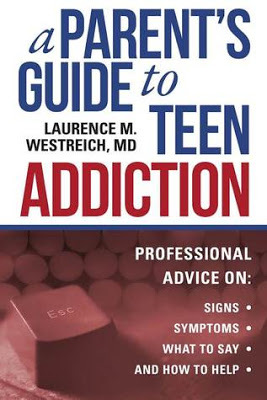 A Parent’s Guide to Teen Addiction
A Parent’s Guide to Teen Addiction
(October 17, 2017; Skyhorse Publishing)
by Laurence Westreich, M.D.
Description
Divided into three sections, this book guides parents from the moment they suspect their teen has a substance abuse problem to the steps families must take after intensive treatment.
Dr. Westreich:
• Lays out the facts of teen addiction and explains how to recognize a problem with a teen
• Details what parents need to know about the substances that teenagers commonly use
• Provides information on what to do about the substance abuse, including how to find good one-on-one addiction therapy, how to encourage a teen to enter an outpatient program or inpatient facility, and how to line up aftercare treatment
Additionally, Dr. Westreich includes “tough talk” dialogues that parents can tailor to their specific situation with their teen.
Between now and November 9, 2017, readers can enter to win a copy of this book on Goodreads. Click here to enter!
About the Author:
Laurence M. Westreich, M.D., is an addiction psychiatrist, clinical associate professor of Psychiatry at the New York University School of Medicine, and the author of A Parent’s Guide to Teen Addiction and Helping the Addict You Love. He is Past President of the American Academy of Addiction Psychiatry, and is a consultant on behavioral health and addiction to the Commissioner of Major League Baseball. He has appeared on CNN, MSNBC, WABC-TV, Fox News, Radio America, Sirius Satellite Radio, WOR-AM, and AP Radio Network, and speaks to schools and community groups on an ongoing basis. He resides in Montclair, New Jersey.
Praise for A Parent’s Guide to Teen Addiction
"Dr. Westreich masterfully provides a skilled balance between the science and art of understanding addictions in teens. Using both case examples and didactics, he provides a very pragmatic guide that is based on professionally accepted methods punctuated by his clinical experience in leading a child out of an addiction. A Parent’s Guide to Teen Addiction will be a very important asset to any family who is suffering with teenage addiction.” ―Timothy Willens, MD, Clinical Director at the Center for Center for Addiction Medicine, Massachusetts General Hospital
“Dr. Westreich’ s book presents a commonsense and user-friendly model for family members who want to help their drug- and alcohol-using teen. The scenarios and dialogues give valuable direction for managing an addicted teen’s often self-destructive and frightening behavior, and would be useful for anyone in this situation.” ―Dr. Herbert D. Kleber, Founder and Director Emeritus of the Division on Substance Abuse at the Columbia University College of Physicians and Surgeons and the New York State Psychiatric Institute
“Dad, I’m fine! Marijuana is natural. I need it to study. But, you did drugs, dad. Dr. Westreich has heard them all. And now he has put all his incredible experience, science, wisdom, and, yes, common sense in A Parent’s Guide to Teen Addiction. If one day you find yourself having a teenager in the family, this little volume of solid gold medical advice is your best guide through the jungle." ―Petros Levounis, MD, MA, Professor and Chair, Rutgers New Jersey Medical School
My Review
Whenever I read a nonfiction book, the first thing I do is flip to the table of contents to see how logically the book is designed. Second, I flip to the back of the book to look for an index and any bonus material. Third, I skim the body of the body, hoping for eye-catching information. Finally, I read the entire content.
With A Parent's Guide to Teen Addiction, I was impressed with many of the book's basic design and content elements. In addition to a detailed table of contents and index, this book contains a 30 page glossary! Another aspect I really appreciated about this book: at the end of each chapter, the author sums up with "Points to Remember." This was a helpful way to reinforce the concepts covered in that particular chapter. The book was written in a way that enables readers to quickly and easily find specific content to help their situation. The chapter titles and subtitles allow readers to zero-in on topics such as food addiction, gambling, and inpatient programs (to pick a few).
I recommend this book to parents, educators, care-givers, and anyone else who wants to help teenagers improve their lives.
A Parent's Guide to Teen Addiction is a comprehensive and easy-to-read tool to help parents help their kids.
[Thank you to FSB Associates for providing me with a copy of this book for review. This in no way influenced my opinion.]
Published on October 30, 2017 12:28
October 17, 2017
7 Chilling Thrillers to Read in the Spooky Month of October
[Book suggestions from Margo Kelly, author of the thrillers Who R U Really? and Unlocked. Descriptions below are from the publishers.]
 I Hunt Killers
by Barry Lyga
I Hunt Killers
by Barry LygaIt was a beautiful day. It was a beautiful field. Except for the body. Jazz is a likable teenager. A charmer, some might say. But he's also the son of the world's most infamous serial killer, and for Dear Old Dad, "Take Your Son to Work Day" was year-round. Jazz has witnessed crime scenes the way cops wish they could--from the criminals' point of view. And now, even though Dad has been in jail for years, bodies are piling up in the sleepy town of Lobo's Nod. Again. In an effort to prove murder doesn't run in the family, Jazz joins the police in the hunt for this new serial killer. But Jazz has a secret--could he be more like his father than anyone knows? From acclaimed author Barry Lyga comes a riveting thriller about a teenager trying to control his own destiny in the face of overwhelming odds.
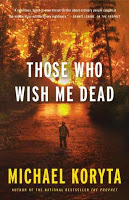 Those Who Wish MeDead
by Michael Koryta
Those Who Wish MeDead
by Michael KorytaWhen fourteen-year-old Jace Wilson witnesses a brutal murder, he's plunged into a new life, issued a false identity and hidden in a wilderness skills program for troubled teens. The plan is to get Jace off the grid while police find the two killers. The result is the start of a nightmare. The killers, known as the Blackwell Brothers, are slaughtering anyone who gets in their way in a methodical quest to reach him. Now all that remains between them and the boy are Ethan and Allison Serbin, who run the wilderness survival program; Hannah Faber, who occupies a lonely fire lookout tower; and endless miles of desolate Montana mountains. The clock is ticking, the mountains are burning, and those who wish Jace Wilson dead are no longer far behind.
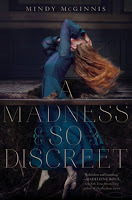 A Madness So Discreet
by Mindy McGinnis
A Madness So Discreet
by Mindy McGinnisGrace Mae is already familiar with madness when family secrets and the bulge in her belly send her to an insane asylum—but it is in the darkness that she finds a new lease on life. When a visiting doctor interested in criminal psychology recognizes Grace's brilliant mind beneath her rage, he recruits her as his assistant. Continuing to operate under the cloak of madness at crime scenes allows her to gather clues from bystanders who believe her less than human. Now comfortable in an ethical asylum, Grace finds friends—and hope. But gruesome nights bring Grace and the doctor into the circle of a killer who will bring her shaky sanity and the demons in her past dangerously close to the surface.
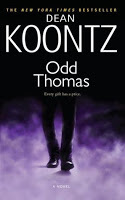 Odd Thomas
by Dean Koontz
Odd Thomas
by Dean Koontz“The dead don’t talk. I don’t know why.” But they do try to communicate, with a short-order cook in a small desert town serving as their reluctant confidant. Meet Odd Thomas, the unassuming young hero of Dean Koontz’s dazzling New York Times bestseller, a gallant sentinel at the crossroads of life and death who offers up his heart in these pages and will forever capture yours. Sometimes the silent souls who seek out Odd want justice. Occasionally their otherworldly tips help him prevent a crime. But this time it’s different. A stranger comes to Pico Mundo, accompanied by a horde of hyena-like shades who herald an imminent catastrophe. Aided by his soul mate, Stormy Llewellyn, and an unlikely community of allies that includes the King of Rock ’n’ Roll, Odd will race against time to thwart the gathering evil. His account of these shattering hours, in which past and present, fate and destiny, converge, is a testament by which to live—an unforgettable fable for our time destined to rank among Dean Koontz’s most enduring works.
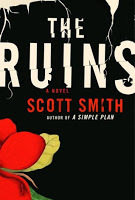 The Ruins
by Scott Smith
The Ruins
by Scott SmithTrapped in the Mexican jungle, a group of friends stumble upon a creeping horror unlike anything they could ever imagine.Two young couples are on a lazy Mexican vacation–sun-drenched days, drunken nights, making friends with fellow tourists. When the brother of one of those friends disappears, they decide to venture into the jungle to look for him. What started out as a fun day-trip slowly spirals into a nightmare when they find an ancient ruins site . . . and the terrifying presence that lurks there.
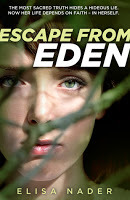 Escape from Eden
by Elisa Nader
Escape from Eden
by Elisa NaderMia has spent half her life rebelling against the iron-fisted fundamentalist preacher who brainwashed her mom into joining a compound of fanatics deep in the South American jungle. When Gabriel, a new boy, turns up, Mia sees the chance to run. But then Mia and Gabriel discover how the paranoid reverend is using faithful church members for his own gain, and how he has big plans to free his whole flock from this evil world while keeping their money to fund his way to a new "paradise" for himself. Love must take a back seat as Mia and Gabriel fight back against a criminal mastermind, because if they can't get the truth in time and live to tell it, hundreds of innocent people, including their own families, face certain death.
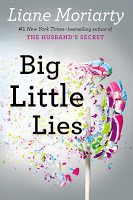 BigLittle Lies
by Liane Moriarty
BigLittle Lies
by Liane MoriartySometimes it’s the little lies that turn out to be the most lethal...A murder…a tragic accident…or just parents behaving badly? What’s indisputable is that someone is dead. But who did what?Big Little Lies follows three women, each at a crossroads:
Madeline is a force to be reckoned with. She’s funny and biting, passionate, she remembers everything and forgives no one. Her ex-husband and his yogi new wife have moved into her beloved beachside community, and their daughter is in the same kindergarten class as Madeline’s youngest (how is this possible?). And to top it all off, Madeline’s teenage daughter seems to be choosing Madeline’s ex-husband over her. (How. Is. This. Possible?). Celeste is the kind of beautiful woman who makes the world stop and stare. While she may seem a bit flustered at times, who wouldn’t be, with those rambunctious twin boys? Now that the boys are starting school, Celeste and her husband look set to become the king and queen of the school parent body. But royalty often comes at a price, and Celeste is grappling with how much more she is willing to pay. New to town, single mom Jane is so young that another mother mistakes her for the nanny. Jane is sad beyond her years and harbors secret doubts about her son. But why? While Madeline and Celeste soon take Jane under their wing, none of them realizes how the arrival of Jane and her inscrutable little boy will affect them all. Big Little Lies is a brilliant take on ex-husbands and second wives, mothers and daughters, schoolyard scandal, and the dangerous little lies we tell ourselves just to survive.
Published on October 17, 2017 01:00
October 3, 2017
Fall 2017 - Young Adult Scavenger Hunt - #YASH

Welcome to YA Scavenger Hunt!
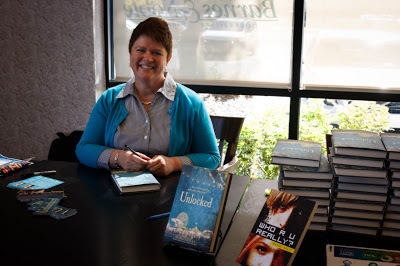
I'm Margo Kelly, and I'll be your hostess for this leg of the hunt. I write thrillers, and I'm excited that my second novel, UNLOCKED, has been in the world for a whole year now! Somewhere along this scavenger hunt, I've shared exclusive content related to UNLOCKED, and clear down at the bottom of this post, I'm giving away a signed hardback copy of it (exclusive to readers of this post) along with a super cool flashlight key chain! Yup. That's right.
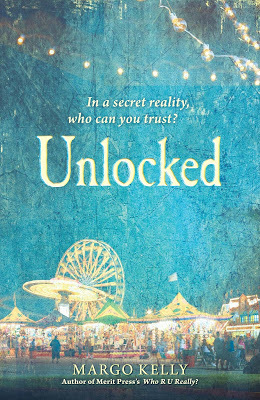

(So be sure to enter the Rafflecopter giveaway at the bottom of this post before you hop off to the next site in the scavenger hunt!)
By the way, you are currently hunting on TEAM GOLD.
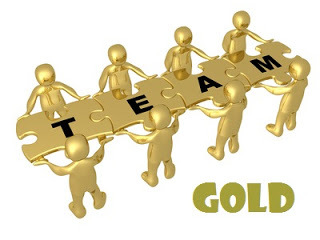

This bi-annual event was first organized by author Colleen Houck as a way to give readers a chance to gain access to exclusive bonus material from their favorite authors ... and a chance to win some awesome prizes! At this hunt, you not only get access to exclusive content from each author, you also get a clue for the hunt.
Add up the clues, and you can enter for the prize -- one lucky winner will receive:
one book from each author on the GOLD team!
But play fast: this contest (and all the exclusive bonus material) will only be online until noon on Sunday, October 8, 2017!
Go to the YA Scavenger Hunt page to find out all about the hunt. There are multiple contests going on simultaneously, and you can enter one or all! I am a part of the GOLD TEAM -- but there are other teams, each with a different set of books!
If you'd like to find out more about the hunt, see links to all the authors participating, and see the full list of prizes up for grabs, go to the YA Scavenger Hunt page.
SCAVENGER HUNT PUZZLE RULES
Directions: Below, you'll notice that I've listed my favorite number. Collect the favorite numbers of all the authors on the gold team, and then add them up (don't worry, you can use a calculator).
Entry Form: Once you've added up all the numbers, make sure you fill out the form here to officially qualify for the grand prize. Only entries that have the correct number will qualify.
Rules: Open internationally, anyone below the age of 18 should have a parent or guardian's permission to enter. To be eligible for the grand prize, you must submit the completed entry form by October 8, 2017, at noon Pacific Time. Entries sent without the correct number or without contact information will not be considered.
SCAVENGER HUNT POST
I am happy to introduce you to the author I'm hosting for the hunt:
Sarah K. L. Wilson
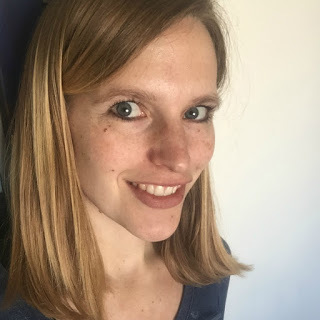
"NOBLEBRIGHT YOUNG ADULT SCIENCE FICTION AND FANTASY
Daydreaming is what I do best. When I was a kid, my family took long road trips and I spent a lot of time looking out the window and daydreaming stories to entertain myself. Now I write them down and entertain other people. I love philosophy, so if you want something different and with a mind-bending twist then look no further. "
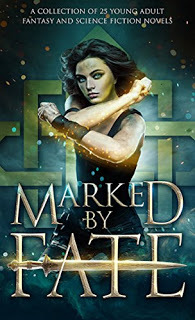
"Champions rise, shadows fall and magic rules in Marked by Fate: A Fantasy and Science Fiction Collection."
Find out more information by checking out Sarah's website or find more about her book here!
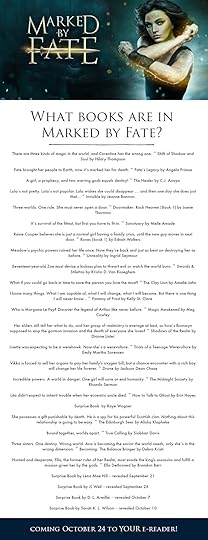
EXCLUSIVE CONTENT
from Sarah K. L. Wilson
Her YouTube Channel:
Marked by Fate
* * * * *
Now don't forget to enter the YASH contest for a chance to win a ton of books by me and 19 other authors on TEAM GOLD. Add up all the favorite numbers of the authors on team gold, and you'll have all the secret code to enter for the grand prize!
But before you go, you'll need to know that my favorite number is 11, and there are 11 chances in this exclusive Rafflecopter giveaway for you to win a signed hardback copy of UNLOCKED and a super cool flashlight key chain! (This contest is separate from the YASH contest. Only visitors here are eligible.)
a Rafflecopter giveaway
CONTINUE THE HUNT
To keep going on your quest for the hunt, you need to check out the next author: CHANDA STAFFORD
Tweet #YASH
Published on October 03, 2017 01:30
Author Interview & Book Review: BORN TO BE WILD by Jess P. Shatkin
Since I often speak with teenagers regarding Internet safety, I am intrigued by their common willingness to take risks even though they've been taught, warned, and shown why certain actions could be harmful to them. So when I was offered an early copy of Jess Shatkin's book, Born to be Wild, I jumped at the opportunity to learn more from this nationally recognized adolescent psychiatrist and author. Additionally, I had the opportunity to ask him a few questions about both his book and his experience as an author. Scroll on down for my interview with Dr. Shatkin and my review of his book.
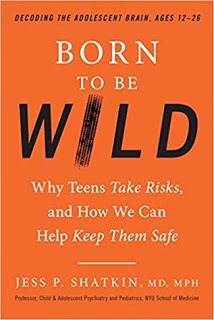 Description from the publisher:
Description from the publisher:
Born to Be Wild: Why Teens Take Risks, and How We Can Help Keep Them Safe by Jess P. Shatkin, M.D. (TarcherPerigee; October 3, 2017).
An acclaimed adolescent psychiatrist and educator, Shatkin has been featured in the New York Times, the Wall Street Journal, and on Good Morning America.
As any parent of a tween, teen or 20-something knows, adolescents take risks. In fact, those aged 12-26 are hard-wired to take risks, but how do you combat these natural impulses? In Born to Be Wild, Jess Shatkin brings more than two decades' worth of research and clinical experience to the subject, along with cutting-edge findings from brain science, evolutionary psychology, game theory, and other disciplines -- plus a widely curious mind and the perspective of a concerned dad himself.
As Dr. Shatkin illustrates in Born to Be Wild:
* Adolescents are genetically engineered to prioritize emotions over logic: Teens make risky choices for social acceptance and to avoid emotional pain. If a peer is watching, even a peer they don’t know, adolescents are more likely to take risks.
* Teens know that they’re not invincible. In fact, studies have shown that, when teens engage in risky behavior, they often overestimate their chances of being harmed by that behavior.
* Improving parenting practices and increasing parent monitoring can help halt high-risk behaviors: Shatkin shares Parent Management Training (PMT) techniques that emphasize tactful praise over remonstrations of how not to behave.
* Supportive families benefit the brain: Studies show teens raised by parents with low levels of conflict in their homes have less demanding brain reward centers; these teens will engage in less risk-taking behavior because their interpersonal relationships are rewarding.
* Ironically, even though adolescence is a risk-taking time, it is also a time of incredible potential. In Born to Be Wild, Shatkin shows what parents and teachers can do--in everyday interactions, teachable moments, and specially chosen activities and outings--to work with teens' need for risk, rewards and social acceptance, not against it.
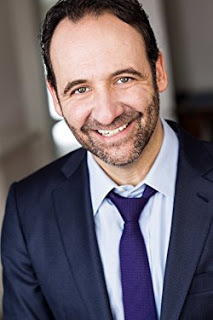 About the Author:
About the Author:
Nationally recognized child and adolescent psychiatrist Jess P. Shatkin, M.D., M.P.H., is one of the country's foremost voices in child and adolescent mental health. He serves as Vice Chair for Education at the Child Study Center and Professor of Child & Adolescent Psychiatry and Pediatrics at New York University School of Medicine. He has been featured in top print, radio, TV, and Internet outlets, including the New York Times, Good Morning America, Parade, New York Magazine, Health Day, CBS Evening News, New York Daily News, Wall Street Journal, and the Los Angeles Times. In addition, for the past eight years Dr. Shatkin has been the host of "About Our Kids," a two-hour call-in radio show broadcast live on SiriusXM's Doctor Radio. He lives in New York City with his wife and two teenage children.
For more information visit his site: www.drjesspshatkin.com
My Interview with Dr. Jess Shatkin:
Q: As a busy and well-respected professional in your field of Child & Adolescent Psychiatry and Pediatrics, how do you balance the time necessary to write a book and uphold the responsibilities of your “day job”?
A: Luckily for me, my day job is to work with and think about children, adolescents, young adults and their families. So, I’m always addressing the sorts of issues I wrote about in Born to Be Wild and building clinical programs and trainings to help adolescents and their families. It’s true that finding the time to write a book is tough. I’ve been thinking about this book for seven years, and started writing it about three years ago. So, it was a long birthing process and a lot of late nights and stolen hours on weekends.
Q: When you prepared to write and publish your first book, did you need to write a nonfiction book proposal and query agents, or were you approached by a publisher because of your expertise in your field?
A: Well, depending upon how you count books, it’s probably fair to say that this is my third book. The first book, Treating Child and Adolescent Mental Illness: A Practical All-in-One Guide, was written for professionals and people training in my field. W.W. Norton published that in 2009, and we published a second edition, retitled Child and Adolescent Mental Health: A Practical All-in-One Guide, in 2015. Also in 2009, I co-edited a book of manuscripts on pediatric sleep disorders, which is an area of my clinical expertise. So, because of the writing I’ve already done, in addition to research and clinical articles I write for professional journals, I do regularly get approached by academic publishers to write and edit books. But that type of writing is very different from writing for the public in general, which is what I’ve done here. So, to get to your real question, yes – I did speak with a few agents and I had to write a long, 120 page!, proposal for the book. The proposal contained a summary, other books in the field that might be perceived as being similar, a detailed description of each chapter, two completed sample chapters, a marketing analysis, and a lot of info about me. That was year one of writing this book.
Q: Whenever I pick up a new nonfiction book to read, I always flip to the table of contents first and then scan through the pages to see how the book is formatted. I noticed right away that you’d chosen unusual titles for each of your chapters, which certainly caught my attention and made me curious. Why did you choose to vaguely title chapters (such as “Achtung, Baby!” and “Getting to Gist”) rather than precisely indicating the content of each chapter?
A: One of my goals with this book was to translate new science and its practical application into common language. As a result, I tried to write in the way that I speak and in a less technical way than I have written in the past. The “fun” titles themselves are aimed at achieving two things: First, I’m trying to hook the reader into the topic by making them curious about what’s next; and second, I’m trying to take the essence of what lies ahead and link it to something that the reader may recognize in some way. Each of the chapter titles is subtitled so that you can see what it really is about (e.g., “Achtung, Baby!” [which is the name of a famous U2 album and therefore may pique some readers’ interest] is subtitled “What doesn’t keep our kids safe” which is what it’s really about). But you’ll also find that every section of the book within each chapter leads with what I hope is an engaging title and topic sentence. This was just one of the ways that I tried to reach my goal of bringing people into material that can otherwise, at times, read as dry.
Q: In your easy-to-read narrative style, you shared a lot of anecdotes. Do you ever worry you shared too many personal elements of your own history or the history of others?
A: No, I haven’t worried about that. I think that everything I shared about myself, while a bit revealing at times, it’s true, is nothing to be ashamed of. I did make some foolish mistakes growing up, and I had some good fortune as well. I tried to show myself as I truly am – human and fallible, sometimes successful. Regarding stories about my own two kids, those are all honest, discussed with them and cleared by them and my wife. In other words, I didn’t reveal anything about them that they’re not comfortable with me revealing. Regarding the patient stories I’ve shared, all of the names and details have been changed, and so they will read as anonymous. I felt it was important to tell the stories so that people who read the book will find it “easy-to-read” as you describe it. Without stories, I suspect the Bible wouldn’t have lasted…it would just read as a list of do’s and don’ts. Likewise, with my book – the stories were absolutely necessary to get the points across.
Q: On page 49, you wrote, “During adolescence, dopamine is more robust within our brain than at any other time of our lives. Never again will chocolate taste so good. . . . This is perhaps the major reason that our memories of adolescence are so strong and our allegiances to the institutions of our youth . . . are so profound. Things will never feel this good again.” This passage was a huge lightbulb moment for me while reading your book, because I could never understand why people were so highly invested in high-school reunions and reliving memories from those years. Those years were not the highlight of my life, and I can assure you, each new day in which I get to savor expensive chocolate is a profound day in deed. Chocolate has never tasted so good as it did today, and I expect it to be even better tomorrow. Could my dopamine levels have been less “robust” than my peers during those adolescent years?
A: Well, first of all, you’re very lucky to be enjoying chocolate so much and looking forward to it every day! My guess is that what you really like about the chocolate, in addition to the taste, is the anticipation of it. That’s why people often like Friday (even though it’s a work day) more than any other day of the week – they are anticipating a weekend; and why they like Sunday even less than Friday, even though it’s a day off, because they are anticipating the work week ahead. That’s a dopamine effect – it’s all about the anticipation of pleasure. And I don’t mean to say that just because dopamine is at all-time highs during adolescence that you cannot enjoy certain things more with age – I think that many things in my life give me more pleasure now than they did when I was younger because I know how to take better advantage of them or utilize them better. An example might be food – I didn’t really like the taste of truffles (of the fungus variety) as a kid, but around 30, I started to really enjoy them; I became able to distinguish truffles from other flavors and appreciated their uniqueness. The same is true for me with red wine – I couldn’t tell one from the other at 25 and didn’t really care much about it. But today, now that I know more and have tasted more wines, I know what I really like and red wine gives me much more pleasure than it did when I was younger. Perhaps that’s the same with you and chocolate. But none of this takes away from the fact that our emotional connection to things of our youth is profound, I believe, because we experienced those things at a time when we were primed to find pleasure by the high levels of dopamine.
Q: On page 32, you told a story about Chris who tried to kill himself after being misjudged due to a “zero tolerance policy.” I, too, know of teenagers who’ve attempted suicide because of such policies, and yet these practices remain in place throughout the country. Do you hope that Born to be Wild will shed new light on these school policies and spur a change within those institutions, or do you hope your book will enlighten parents so they can help guide and protect their children from those strict policies?
A: I would hope for both. Change takes time, but I hope that my book will contribute to an ongoing conversation about how we raise our kids and particularly how we understand adolescents and this unique developmental stage.
Q: What was your number one goal in writing Born to be Wild?
A: My main goal was really to contribute to our understanding of adolescents; and to share what has been learned with the general public.
Q: What is the number one item you hope readers will take away from your book?
A: I hope that readers will gain a better understanding of themselves and adolescents, which I hope will lead to greater empathy, less frustration, and more constructive problem solving in helping our kids grow into healthy and responsible adults.
My Review of Born to be Wild:
My favorite way to read a nonfiction book is with Post-it flags and a pencil, because I love to flag compelling statements and I like to write notes to myself, reminding me of personal epiphanies I had while reading. The problem with this particular book was . . . I ran out of Post-its, because I had trouble using only one per page!
Dr. Jess Shatkin shares profound concepts regarding the teenager's inclination to take risks on nearly every page of his new book, Born to be Wild.
Dr. Shatkin's easy-to-read narrative combines anecdotes and scientific details to explain elements of the teenage psyche. For example, he utilizes a story about trying chocolate for the first time and relates that to how dopamine influences our future choices. Furthermore, he explains, "One of the most significant distinctions between adolescents and adults is the amount of dopamine flowing in different parts of the brain." (page 47) "Because the dopamine system of an adolescent is at its pinnacle and will never be this responsive again, novelty really rocks their world." (page 66)
Born to be Wild not only explores why teens takes risks, it also gives effective tools for adults who care about the young people in their lives, offering ways to teach resiliency and provide guidance.
Parents, educators, and leaders of adolescents would benefit from reading Born to be Wild, which delivers thoughtful and scientific insights into the behavior of young adults and offers beneficial ways to help them through these turbulent years.
I highly recommend Born to be Wild by Jess P. Shatkin.
Buy it on Amazon, click here.
[Thank you to FSB Associates for providing me with a copy of this book for review. This in no way influenced my opinion.]
 Description from the publisher:
Description from the publisher:
Born to Be Wild: Why Teens Take Risks, and How We Can Help Keep Them Safe by Jess P. Shatkin, M.D. (TarcherPerigee; October 3, 2017).
An acclaimed adolescent psychiatrist and educator, Shatkin has been featured in the New York Times, the Wall Street Journal, and on Good Morning America.
As any parent of a tween, teen or 20-something knows, adolescents take risks. In fact, those aged 12-26 are hard-wired to take risks, but how do you combat these natural impulses? In Born to Be Wild, Jess Shatkin brings more than two decades' worth of research and clinical experience to the subject, along with cutting-edge findings from brain science, evolutionary psychology, game theory, and other disciplines -- plus a widely curious mind and the perspective of a concerned dad himself.
As Dr. Shatkin illustrates in Born to Be Wild:
* Adolescents are genetically engineered to prioritize emotions over logic: Teens make risky choices for social acceptance and to avoid emotional pain. If a peer is watching, even a peer they don’t know, adolescents are more likely to take risks.
* Teens know that they’re not invincible. In fact, studies have shown that, when teens engage in risky behavior, they often overestimate their chances of being harmed by that behavior.
* Improving parenting practices and increasing parent monitoring can help halt high-risk behaviors: Shatkin shares Parent Management Training (PMT) techniques that emphasize tactful praise over remonstrations of how not to behave.
* Supportive families benefit the brain: Studies show teens raised by parents with low levels of conflict in their homes have less demanding brain reward centers; these teens will engage in less risk-taking behavior because their interpersonal relationships are rewarding.
* Ironically, even though adolescence is a risk-taking time, it is also a time of incredible potential. In Born to Be Wild, Shatkin shows what parents and teachers can do--in everyday interactions, teachable moments, and specially chosen activities and outings--to work with teens' need for risk, rewards and social acceptance, not against it.
 About the Author:
About the Author:
Nationally recognized child and adolescent psychiatrist Jess P. Shatkin, M.D., M.P.H., is one of the country's foremost voices in child and adolescent mental health. He serves as Vice Chair for Education at the Child Study Center and Professor of Child & Adolescent Psychiatry and Pediatrics at New York University School of Medicine. He has been featured in top print, radio, TV, and Internet outlets, including the New York Times, Good Morning America, Parade, New York Magazine, Health Day, CBS Evening News, New York Daily News, Wall Street Journal, and the Los Angeles Times. In addition, for the past eight years Dr. Shatkin has been the host of "About Our Kids," a two-hour call-in radio show broadcast live on SiriusXM's Doctor Radio. He lives in New York City with his wife and two teenage children.
For more information visit his site: www.drjesspshatkin.com
My Interview with Dr. Jess Shatkin:
Q: As a busy and well-respected professional in your field of Child & Adolescent Psychiatry and Pediatrics, how do you balance the time necessary to write a book and uphold the responsibilities of your “day job”?
A: Luckily for me, my day job is to work with and think about children, adolescents, young adults and their families. So, I’m always addressing the sorts of issues I wrote about in Born to Be Wild and building clinical programs and trainings to help adolescents and their families. It’s true that finding the time to write a book is tough. I’ve been thinking about this book for seven years, and started writing it about three years ago. So, it was a long birthing process and a lot of late nights and stolen hours on weekends.
Q: When you prepared to write and publish your first book, did you need to write a nonfiction book proposal and query agents, or were you approached by a publisher because of your expertise in your field?
A: Well, depending upon how you count books, it’s probably fair to say that this is my third book. The first book, Treating Child and Adolescent Mental Illness: A Practical All-in-One Guide, was written for professionals and people training in my field. W.W. Norton published that in 2009, and we published a second edition, retitled Child and Adolescent Mental Health: A Practical All-in-One Guide, in 2015. Also in 2009, I co-edited a book of manuscripts on pediatric sleep disorders, which is an area of my clinical expertise. So, because of the writing I’ve already done, in addition to research and clinical articles I write for professional journals, I do regularly get approached by academic publishers to write and edit books. But that type of writing is very different from writing for the public in general, which is what I’ve done here. So, to get to your real question, yes – I did speak with a few agents and I had to write a long, 120 page!, proposal for the book. The proposal contained a summary, other books in the field that might be perceived as being similar, a detailed description of each chapter, two completed sample chapters, a marketing analysis, and a lot of info about me. That was year one of writing this book.
Q: Whenever I pick up a new nonfiction book to read, I always flip to the table of contents first and then scan through the pages to see how the book is formatted. I noticed right away that you’d chosen unusual titles for each of your chapters, which certainly caught my attention and made me curious. Why did you choose to vaguely title chapters (such as “Achtung, Baby!” and “Getting to Gist”) rather than precisely indicating the content of each chapter?
A: One of my goals with this book was to translate new science and its practical application into common language. As a result, I tried to write in the way that I speak and in a less technical way than I have written in the past. The “fun” titles themselves are aimed at achieving two things: First, I’m trying to hook the reader into the topic by making them curious about what’s next; and second, I’m trying to take the essence of what lies ahead and link it to something that the reader may recognize in some way. Each of the chapter titles is subtitled so that you can see what it really is about (e.g., “Achtung, Baby!” [which is the name of a famous U2 album and therefore may pique some readers’ interest] is subtitled “What doesn’t keep our kids safe” which is what it’s really about). But you’ll also find that every section of the book within each chapter leads with what I hope is an engaging title and topic sentence. This was just one of the ways that I tried to reach my goal of bringing people into material that can otherwise, at times, read as dry.
Q: In your easy-to-read narrative style, you shared a lot of anecdotes. Do you ever worry you shared too many personal elements of your own history or the history of others?
A: No, I haven’t worried about that. I think that everything I shared about myself, while a bit revealing at times, it’s true, is nothing to be ashamed of. I did make some foolish mistakes growing up, and I had some good fortune as well. I tried to show myself as I truly am – human and fallible, sometimes successful. Regarding stories about my own two kids, those are all honest, discussed with them and cleared by them and my wife. In other words, I didn’t reveal anything about them that they’re not comfortable with me revealing. Regarding the patient stories I’ve shared, all of the names and details have been changed, and so they will read as anonymous. I felt it was important to tell the stories so that people who read the book will find it “easy-to-read” as you describe it. Without stories, I suspect the Bible wouldn’t have lasted…it would just read as a list of do’s and don’ts. Likewise, with my book – the stories were absolutely necessary to get the points across.
Q: On page 49, you wrote, “During adolescence, dopamine is more robust within our brain than at any other time of our lives. Never again will chocolate taste so good. . . . This is perhaps the major reason that our memories of adolescence are so strong and our allegiances to the institutions of our youth . . . are so profound. Things will never feel this good again.” This passage was a huge lightbulb moment for me while reading your book, because I could never understand why people were so highly invested in high-school reunions and reliving memories from those years. Those years were not the highlight of my life, and I can assure you, each new day in which I get to savor expensive chocolate is a profound day in deed. Chocolate has never tasted so good as it did today, and I expect it to be even better tomorrow. Could my dopamine levels have been less “robust” than my peers during those adolescent years?
A: Well, first of all, you’re very lucky to be enjoying chocolate so much and looking forward to it every day! My guess is that what you really like about the chocolate, in addition to the taste, is the anticipation of it. That’s why people often like Friday (even though it’s a work day) more than any other day of the week – they are anticipating a weekend; and why they like Sunday even less than Friday, even though it’s a day off, because they are anticipating the work week ahead. That’s a dopamine effect – it’s all about the anticipation of pleasure. And I don’t mean to say that just because dopamine is at all-time highs during adolescence that you cannot enjoy certain things more with age – I think that many things in my life give me more pleasure now than they did when I was younger because I know how to take better advantage of them or utilize them better. An example might be food – I didn’t really like the taste of truffles (of the fungus variety) as a kid, but around 30, I started to really enjoy them; I became able to distinguish truffles from other flavors and appreciated their uniqueness. The same is true for me with red wine – I couldn’t tell one from the other at 25 and didn’t really care much about it. But today, now that I know more and have tasted more wines, I know what I really like and red wine gives me much more pleasure than it did when I was younger. Perhaps that’s the same with you and chocolate. But none of this takes away from the fact that our emotional connection to things of our youth is profound, I believe, because we experienced those things at a time when we were primed to find pleasure by the high levels of dopamine.
Q: On page 32, you told a story about Chris who tried to kill himself after being misjudged due to a “zero tolerance policy.” I, too, know of teenagers who’ve attempted suicide because of such policies, and yet these practices remain in place throughout the country. Do you hope that Born to be Wild will shed new light on these school policies and spur a change within those institutions, or do you hope your book will enlighten parents so they can help guide and protect their children from those strict policies?
A: I would hope for both. Change takes time, but I hope that my book will contribute to an ongoing conversation about how we raise our kids and particularly how we understand adolescents and this unique developmental stage.
Q: What was your number one goal in writing Born to be Wild?
A: My main goal was really to contribute to our understanding of adolescents; and to share what has been learned with the general public.
Q: What is the number one item you hope readers will take away from your book?
A: I hope that readers will gain a better understanding of themselves and adolescents, which I hope will lead to greater empathy, less frustration, and more constructive problem solving in helping our kids grow into healthy and responsible adults.
My Review of Born to be Wild:
My favorite way to read a nonfiction book is with Post-it flags and a pencil, because I love to flag compelling statements and I like to write notes to myself, reminding me of personal epiphanies I had while reading. The problem with this particular book was . . . I ran out of Post-its, because I had trouble using only one per page!
Dr. Jess Shatkin shares profound concepts regarding the teenager's inclination to take risks on nearly every page of his new book, Born to be Wild.
Dr. Shatkin's easy-to-read narrative combines anecdotes and scientific details to explain elements of the teenage psyche. For example, he utilizes a story about trying chocolate for the first time and relates that to how dopamine influences our future choices. Furthermore, he explains, "One of the most significant distinctions between adolescents and adults is the amount of dopamine flowing in different parts of the brain." (page 47) "Because the dopamine system of an adolescent is at its pinnacle and will never be this responsive again, novelty really rocks their world." (page 66)
Born to be Wild not only explores why teens takes risks, it also gives effective tools for adults who care about the young people in their lives, offering ways to teach resiliency and provide guidance.
Parents, educators, and leaders of adolescents would benefit from reading Born to be Wild, which delivers thoughtful and scientific insights into the behavior of young adults and offers beneficial ways to help them through these turbulent years.
I highly recommend Born to be Wild by Jess P. Shatkin.
Buy it on Amazon, click here.
[Thank you to FSB Associates for providing me with a copy of this book for review. This in no way influenced my opinion.]
Published on October 03, 2017 01:00



